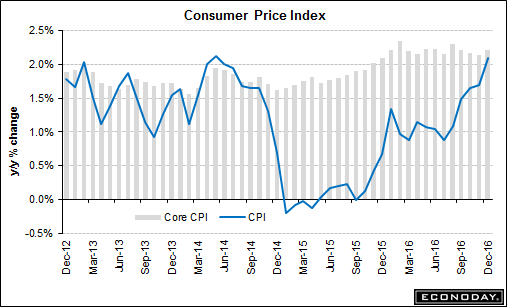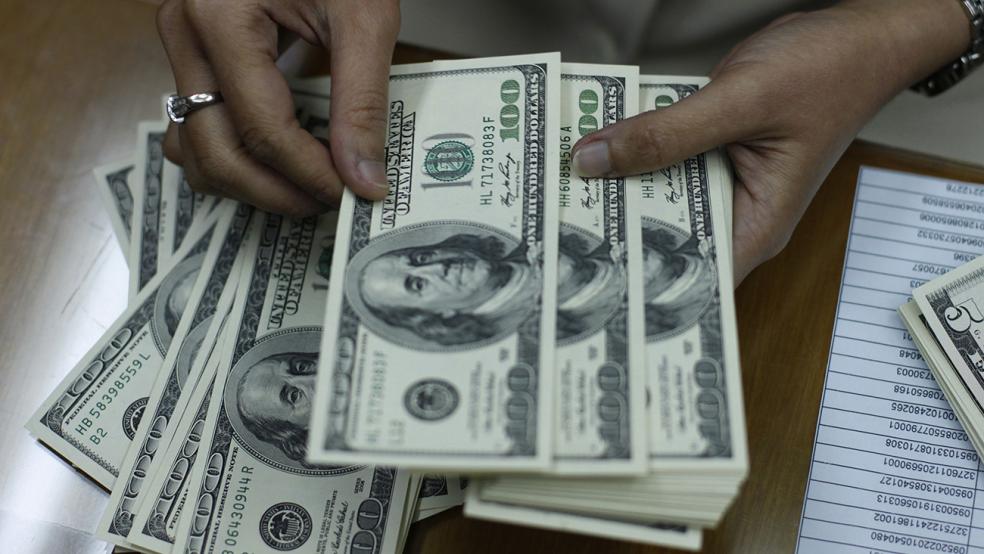Don't look now, but Federal Reserve officials could actually have a problem with price inflation on their hands — something they've been trying to encourage, via ultra-low interest rates and multiple bond buying programs, for years.
The only problem: The signs of inflation have emerged now that Wall Street has grown addicted to a dovish Fed. A hawkish turn now, which the Fed has been threatening since the surprise election of Donald Trump boosted hopes of fiscal stimulus and economic growth, could undo the historic calm financial markets have enjoyed since former Fed Chair Ben Bernanke unleashed "QE3" in September 2012.
Related: Why Stocks Could Have a Rocky First Month Under Trump
All this comes after a surprisingly strong Consumer Price Index report was released last week showing prices rose 2.1 percent from last December, driven by shelter and fuel costs, vs. the 1.7 percent expected. Not only was this the fastest pace of price increases since the summer of 2014 (when crude oil was peaking), but it also pushes the inflation rate (both the headline and the "core" rate that removes volatile fuel and food prices) above the Fed's 2 percent target.

The Fed has OPEC to thank, as the oil cartel's agreement late last year to freeze production — a deal that had been teased in one form or another since last February — did much to keep crude oil prices stable. Bad news for American drivers; good news for policymakers in Washington. The tailwind from crude oil will only grow stronger in the months to come as we eclipse last year's price decline to a low of $26 a barrel on February 11.
Gluskin Sheff economist and strategist David Rosenberg says that, all else equal, the year-over-year changes in oil prices mean the headline inflation rate should push toward 2.5 percent by February (which will be reported in March). That would mark a five-year high for inflation. And it would encourage the Fed to raise interest rates again for only the third time in this cycle, likely in June.
Related: Hedge Funds Hit $3 Trillion, but Some Investors Are Headed for the Door
Outside of energy, inflation is also bubbling up in areas like used vehicles (prices are rising at the best rate since April 2015), shelter (highest monthly gain of 2016) and airfare (highest since June 2015). But the cost of shelter represents the single most important component here, as it accounts for about a third of the overall CPI calculation and is rising fast (an annual rate of 3.6 percent, a multi-decade high).
Shelter cost inflation is a consequence of a lull in housing supply after the bursting of the housing bubble.
Further evidence of inflation coming down the pipeline comes from manufacturing activity surveys, specifically the Empire State survey capturing activity in the New York region. Rosenberg notes that the latest result, based on an average of prices paid and received, suggests overall inflation could soon drift toward a 3.5 percent annual rate.
Related: Obama Left Us Much 'Better Off Now Than 8 Years Ago.' Can Trump Top That?
That's a pace last seen in the middle of 2011, before the fiscal showdown between the Obama White House and Republicans in Congress resulted in a downgrade of the U.S. credit rating and the single worst bout of volatility of the bull market to date. Only now is the economy heating up again, a testament to just how destabilizing that entire episode was.
At its December policy meeting, the Federal Reserve penciled in three more quarter-point rate hikes for 2017. We will learn more about that outlook when officials meet to set policy again on January 31 and February 1. The Fed's economic projections won't be updated, however, until the March meeting.
Anthony Mirhaydari is founder of the Edge and Edge Pro investment advisory newsletters. A two-week and four-week free trial offer has been extended to Fiscal Times readers.






